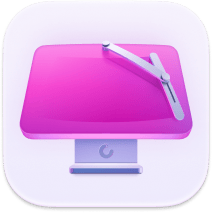macOS Tahoe removes FireWire support. How to deal with it?
Does macOS Tahoe support FireWire? Well, the short answer is no. With the release of macOS 26 Tahoe, FireWire 400 and 800 support appears to have been dropped entirely.
This means devices like external hard drives, older audio interfaces, DV camcorders, and legacy iPods relying on FireWire no longer mount or function under Tahoe.
In my experience testing early betas, plugging in a FireWire device simply does nothing — it doesn't appear in Disk Utility or the Finder. That means many older accessories become unusable, unless you adapt.
Below, I'll explain why FireWire doesn't work, what that means for your gear, and which practical options you can use to keep using or migrate from FireWire devices.
Why is macOS Tahoe FireWire not working
FireWire support has been removed at the driver and system levels in Tahoe, and there are a ton of reports from developers and users confirming that both FireWire 400 and FireWire 800 devices no longer mount or appear in system reports.
You might have noticed that Apple removed the FireWire section entirely from the System Information app in Tahoe. Because macOS no longer includes the low‑level kernel extensions or drivers for IEEE 1394, FireWire traffic simply cannot be handled. Adapters or dongles converting FireWire to Thunderbolt or USB no longer help either, with Tahoe seeing them as generic devices, not actual FireWire endpoints.
Overall, the removal seems intentional, not accidental, with loads of early beta users observing that the FireWire interface was entirely absent. So now you know why, let's look at what your options are for macOS Tahoe FireWire support.
What this means for FireWire users and older hardware
If you relied on FireWire for backups, audio production, video capture, or legacy devices, Tahoe effectively cuts those off. Let's break it down.
|
FireWire Device Type |
Behavior in macOS Tahoe |
Impact |
|
External FireWire HDD / SSD |
Does not mount; no interface seen |
You can no longer access data |
|
Audio interfaces (FireWire-based) |
No driver support; device not recognized |
Audio gear stops working |
|
DV camcorder / MiniDV |
Capture via FireWire is broken |
You can no longer ingest video |
|
iPods / older devices |
Not recognized; appears dead |
Cannot sync or restore |
|
Mixed workflow (Thunderbolt + FireWire adapter) |
Adapter passes through but device not usable |
Acts like unsupported device |
Options for using FireWire device in macOS Tahoe
You can't restore FireWire support natively, but here are your paths forward:
1. Use an older Mac with macOS Sequoia or earlier
Keep a machine running macOS 15 Sequoia (or earlier) solely for FireWire work. You can transfer files from it to your Tahoe machine. If you still have access to a Mac running Sequoia or earlier, that's your best shot at retrieving data from FireWire drives.
Before doing any large data transfers, I always run CleanMyMac's Smart Care scan, which helps me clear temp files and system clutter that might slow down the process; here's how:
-
Open CleanMyMac — get your free trial here.
-
Select Smart Care > Scan.
-
Once finished, clear up junk and items no longer needed on your Mac.

Whilst you've got the app open, its Performance feature is another powerhouse for keeping old Macs and older OS software running at its best; here's how it works:
-
Select Performance > Scan.
-
Click View All Tasks.
-
Take a look at what's found and run the tasks you need.

These steps aren't mandatory, but they've helped me avoid slowdowns during data migration.
2. Run an older macOS in a virtual machine
You can also try the virtualization route, but there are mixed reviews. This option will only work if you're running on an older Intel-based hardware Mac with macOS Sequoia or earlier.
3. Replace FireWire devices with modern alternatives
Switch to USB-C, Thunderbolt, or PCIe-based devices. For hard drives, use external SSDs. For audio, use class-compliant USB or Thunderbolt interfaces.
4. Use network bridging or a file server
Connect FireWire hardware to a networked legacy Mac or NAS, then access files over SMB/AFP from your Tahoe Mac.
Conclusion: macOS Tahoe FireWire compatibility issues
Not being able to use FireWire devices in macOS Tahoe is a heavy shift for many users out there. It certainly caught me off guard. I still have old hard drives and an audio interface that only connects via IEEE 1394, and after updating to 26.0.1, they simply stopped showing up. Apple's dropped all FireWire drivers, so there's no workaround inside Tahoe itself. If you rely on FireWire gear, you either need to hold onto an older system or plan to migrate everything to USB or Thunderbolt while you still can.

